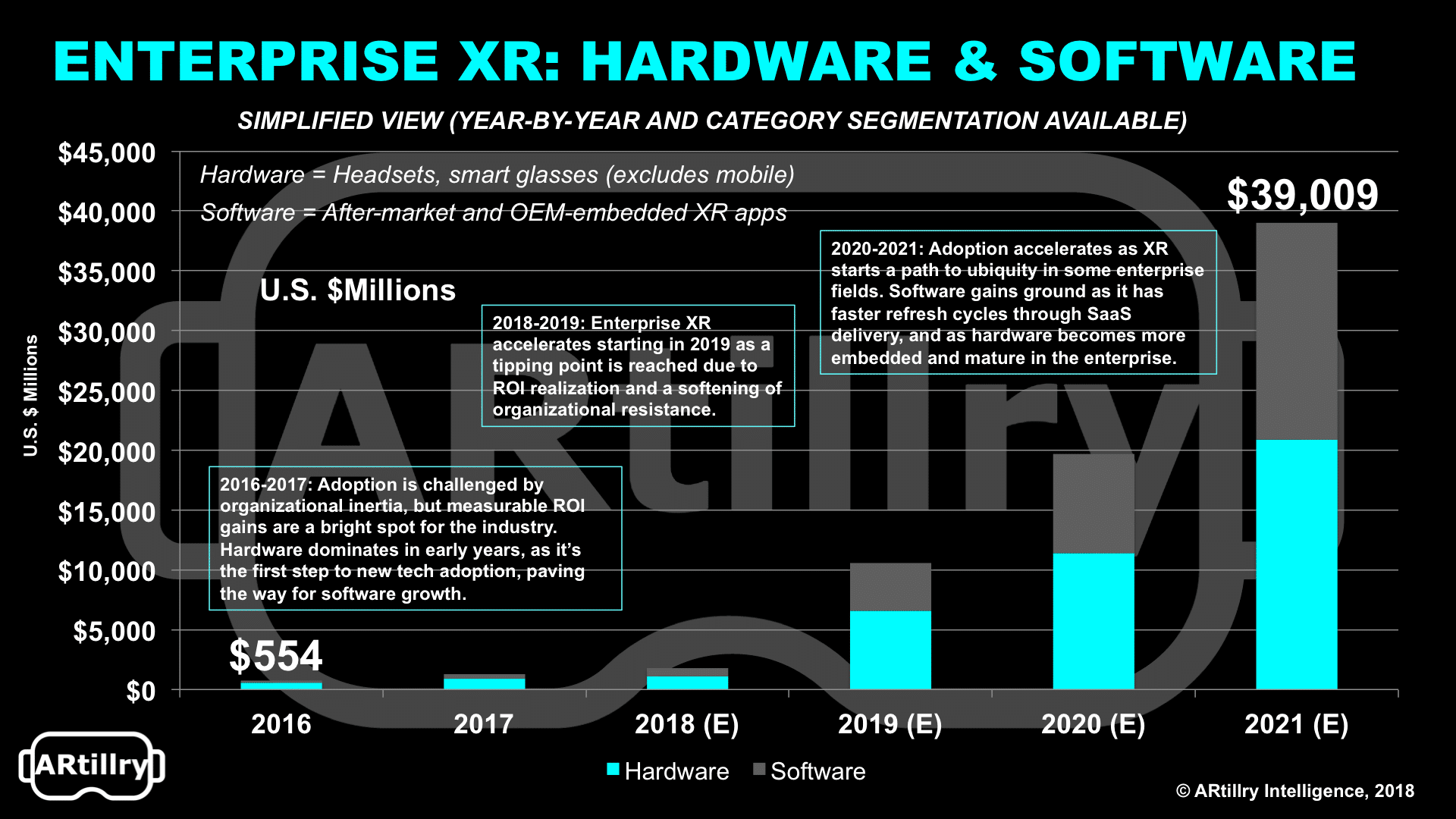
AR and VR will unlock all kinds of operational efficiencies and bottom line impact for enterprises. This was the topic of a recent ARtillry Intelligence Briefing, unpacked further in the latest ARtillry Briefs episode (below).
To summarize, AR and VR’s slower than expected consumer adoption have caused focus to shift to areas of nearer term scale, including the enterprise. For one, enterprise buyers have less stylistic and budgetary restraints for things like AR glasses, compared to consumer markets.
There are also clear operational efficiencies and bottom line impact. Most of the companies we heard from report anywhere from 15-45 percent efficiency gains, through time and error reduction in functions like manufacturing, assembly and maintenance. This further drives the ROI formula.
Examples include Boeing using AR glasses to affix the wire harnesses on their planes, or Coca Cola fixing broken bottling equipment and expediting assembly-line changeovers. Additional cost savings result from lessening machine downtime, and flying in vendors for maintenance.

For all these reasons and more, we project enterprise XR to grow from $554 million in 2016 to $39 billion by 2021.That’s split between AR and VR, with AR taking the majority of revenue due to wider applicability across enterprise functions, which results from a more versatile form factor.
And these numbers hinge on an inflection point in 2019, which will come as many of XR’s advantages overpower the forces that currently stand in their way, such as natural organizational red tape, and cultural resistance to new technology, and sales cycles.
Speaking of barriers, some of the ways to overcome them include grass-roots support. Greater chance of deployment results from advocacy within the business units proposed to use XR — not just the innovation leaders at a given company (divisions tasked with finding new technology).
The good news is that there’s evidence that sales cycles are reducing in length. And overall cultural familiarity with XR will inch forward and lessen enterprise resistance, which is a common process in tech revolutions. We saw the same thing with enterprise smartphone adoption.
Those are a few takeaways and you can see the video below and check out the report it’s based on here. Stay tuned for lots more published material and multimedia as all of these XR trends continue to unfold. Meanwhile, past ARtillry Briefs episodes can be seen here.
For a deeper dive on AR & VR insights, see ARtillry’s new intelligence subscription, and sign up for the free ARtillry Weekly newsletter.
Disclosure: ARtillry has no financial stake in the companies mentioned in this post, nor received payment for its production. Disclosure and ethics policy can be seen here.
